Myopia
What is Myopia?
Myopia is what most people call shortsightedness. Shortsighted people do not see distant objects clearly. The eye’s lens and cornea normally focus light into an image on the retina. In a myopic eye the light is focused in front of the retina and so the image is blurred.
Does a shortsighted person see close objects more clearly than a person with normal vision?
No. Shortsighted people see close objects equally as well or often slightly worse. When their Myopia is corrected, they see objects equally as well.
How can I tell if I am shortsighted?
Shortsighted people have difficulty in seeing distant objects clearly. They find it hard to read road signs and scoreboards and to play ball games. Recognising people in the distance may be a problem for many shortsighted people. Often a person will not realise that they cannot see clearly but an eye examination by an optometrist will reveal the problem.
How can I tell if my child is shortsighted?
A complete eye test is the only sure way of determining whether your child’s vision is normal. Some clues to Myopia in a child are:
- screwing up eyes to see distant objects.
- difficultyin reading the blackboard at school.
- poorposture while reading.
- alack of interest in playing outdoor games.
What causes Myopia?
Myopia is caused by a mismatch between the power of the optical components of the eye and the length of the eye (the ‘axial length’). Either the power is too high, or the length is too long, or both. Usually the cornea (the front surface of the eye) is curved more steeply than average, increasing its optical power. The exact causes of the mismatch between power and axial length are unknown. There is some genetic influence (if your parents are shortsighted, you have a better than average chance of being shortsighted yourself), and there is some evidence for environmental factors, such as excessive amounts of near work, having some influence.
Can Myopia be cured?
No, but properly prescribed spectacles or contact lenses will enable the person to see clearly. The lenses diverge incoming light rays, so that they will be properly focused on the retina. There are also a number of techniques available for re-shaping the cornea (the front surface of the eye), in order to reduce its power and thus correct the Myopia. One technique (known as orthokeratology or ‘Ortho-K’) uses rigid contact lenses to change the shape of the cornea. Other techniques use surgery to remove tissue from the cornea, leaving it with a flatter surface.
Can Myopia be prevented?
There is no certain prevention for Myopia. However, in some cases, treatment can be prescribed to stop or slow its progression.
How common is Myopia?
It is a very common condition. About 15 per cent of the population are shortsighted. Usually Myopia begins to develop in teenage years and it may get worse over the following few years.
Can Myopia cause other problems?
HIgh levels of Myopia can cause other, more serious problems. People with high levels of Myopia often have very large, elongated eyes, and their retinas may be stretched and thinner than normal. This increases the risk of the retina developing holes and tears and the risk of retinal detachments. If you are myopic you should have regular eye examinations, and talk to your optometrist about the potential for problems.

